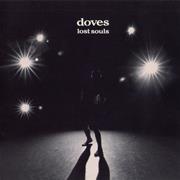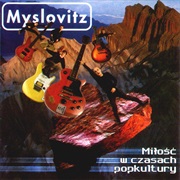

It was the synthesis of elements from noise pop, noise rock, ethereal wave, minimal psych, gothic rock, space rock, garage rock, twee pop, post-punk, and a long list of others. It was an incredible innovation, but did not appear out of thin air. Here was a band that was taking this massive, disgusting noise, and using it to write pretty, melodic pop songs. When My Bloody Valentine released the You Made Me Realise EP in 1988, it was revolutionary. Modern shoegaze bands, sometimes referred to as "nu-gaze" (a term coined by the band My Vitriol), are bands that are either imitate or are heavily influenced by the bands in the shoegazing scene of the early 90s. There is no right answer here, and it's all semantics at the end of the day. Conversely, some critics go in the opposite direction and consider bands like Cocteau Twins, The Jesus and Mary Chain, and Spacemen 3 "shoegaze". Most people do consider My Bloody Valentine to be a shoegaze band, but if you see someone say otherwise, this is likely why. It only goes to show how convoluted the term really is. Therefore, some critics argue that they were outside of the scene, and are better described as influences for shoegazing. They were much older than many of their contemporaries in the scene, and had been playing and recording for most of the 80s. There is even discrepancy over whether the "definitive" shoegaze band, My Bloody Valentine, is even shoegaze at all. It was once synonymous with shoegaze, and at some point in time was redefined to describe lighter-sounding bands now associated with dream pop, like Beach House. To add another layer of confusion, "dream pop" of the 80s and 90s is different from the dream pop that we know today. Prior the term "shoegaze", these same bands were known as "dream pop", a term coined by the proto-shoegaze group A.R. The term was used so liberally that bands would be labeled as "shoegaze" by simply opening up for another shoegaze band. It was a label thrown onto bands by eager journalists to describe their fixation with effects pedals and detached performance style. "Shoegaze" was not a term that the bands chose to self-identify as. Shoegaze as a movement includes a particular set of bands, predominantly from the UK and US, from the late 80s to early 90s. Many shoegaze bands do deviate from these ideas, but these are all common identifiers of shoegazing. Effects pedals are used heavily to distort and process the guitar signals, while the slow, subdued, breathy vocals are hidden beneath it all. Shoegaze is where minimalism and maximalism snake around at both ends – the walls of sound are immense and all-encompassing, but to such an extreme that everything is painted in different shades of the same color. It typically involves heavily layered, lush guitars that build up into a wall of sound. At its heart, shoegaze is where noise and ethereal elements meet, distilled into simple, melodic pop songs. When referring to shoegaze as a style, you typically see the same few adjectives mentioned: ethereal, noisy, swirling, surreal, shimmering, gliding, pummeling, droning, dense, melancholy. There's certainly an element of that to shoegaze as well, but what makes shoegaze more difficult to pinpoint is the fact that it describes both a style and movement. Genres like folk, jazz, blues, synthpop, psych rock, and ambient are typically easy to identify, as they're defined in terms of their sound or aesthetics. It's used so frequently that it's difficult to tell what it actually means sometimes. In 2015, "shoegaze" has become a bit of a buzzword. (Please forgive me for any errors made here - I just finished writing it and gave it one quick read before submitting!!) If all you've heard is some MBV, Ride, or Slowdive, and none of it resonated with you, I encourage you to keep reading anyway. My hope is that this guide helps others experience some of the love and appreciation for this genre that I have. I've loved many genres throughout my lifetime, but I've never gone so far down the rabbit hole as I have with shoegaze. This guide cannot possibly cover all of them, but hopefully it gives both new and more experienced listeners some new bands to check out, while providing a bit more color and context to the music.

The more I researched and listened, the more I realized just how much more there was to learn, and how many more great shoegazing bands are out there. Prior to starting this project, I really thought I had a strong knowledge of shoegaze. This guide and essentials chart is the culmination of months of listening and research between /u/giraffeking and I. Shoegaze Essentials (Click to view chart)


 0 kommentar(er)
0 kommentar(er)
